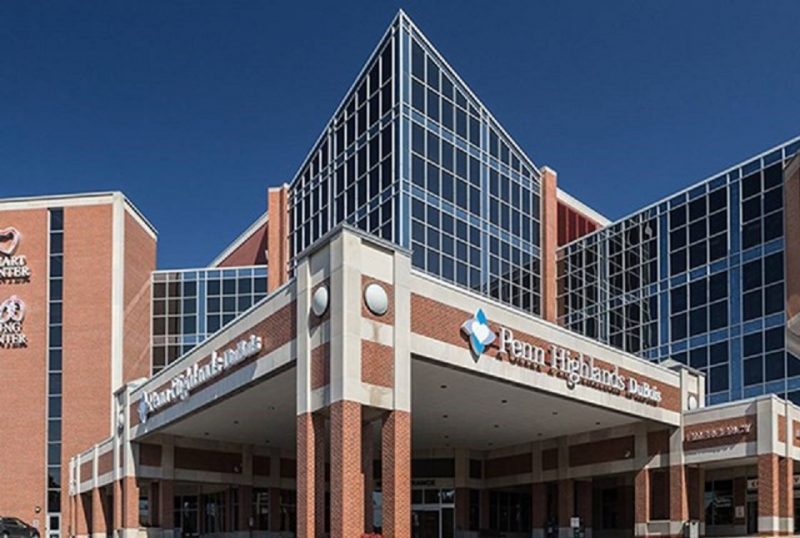DUBOIS – On Thursday afternoon, Penn Highlands Healthcare held a teleconference to update the community on the health system’s current responses to the COVID-19 pandemic.
Shaun Sheehan, medical director of emergency medicine and COVID-19 task force leader, and Mark Norman, chief operations officer of PHH, briefly spoke about current conditions and then answered questions from the press.
Norman noted that because of the increase of cases, PHH decided it was time to hold a news conference and share insight into what is currently happening. He noted that since the pandemic reached North America, PHH has had patient safety and care as a top priority.
He said that patients have expressed that they recognize the need for precautions and they have felt safe at Penn Highlands facilities.
Additionally, Penn Highlands has worked hard to adapt its measures as the latest information has come out about the virus. Recently, PHH has seen a significant rise in cases in the area and the system has reminded staff of the risks and of measures to take to prevent the spread of the illness.
Sheehan added that they have continually monitored local numbers and statistics and shared that information and there is concern for the community.
“This is not the time to relax,” Sheehan said, “Wear masks, social distance and avoid large gatherings.”
He noted that PHH had created a special unit at the DuBois hospital for COVID patients, a unit that was isolated from the rest of the hospital with negative pressure rooms, but that unit was closed in the spring when numbers of infected decreased.
However, since numbers have begun to increase, the unit was reopened last week.
PHH has also ordered COVID-19 testing equipment, which arrived in October, and now test results are returned in less than 24 hours, and in some cases less than one hour. Over 15,000 people have been tested by Penn Highlands since the pandemic started.
Sheehan said people need to remember to seek out medical care for all of their health concerns and not put off visiting the doctor. He said he has seen too many people who have resisted seeking healthcare and ended up in the emergency room with serious problems that could have been prevented.
In addition to traditional office visits, patients can also take advantage of the My Health App, which includes 200 healthcare providers and is safe and secure, he said.
Penn Highlands has enough intensive care unit beds, personal protective equipment and staffing, he said, and inventory levels are higher than they were at the start of the pandemic.
PHH has implemented two dozen safety precautions, including restricted visitation, allowing only one support person for each patient, regular temperature and symptom checks, requiring masks and adding cleaning protocols. Also, parking lot waiting rooms have been reinstated.
Sheehan and Norman then answered questions.
Regarding a possible vaccine, Sheehan said that one in production has been reportedly 90 percent effective and when a vaccine is available, PHH will be in contact with the Department of Health and follow distribution guidelines.
When asked about how many confirmed patients Penn Highlands has had, no answer was given, but Norman did say there are currently 20 being treated in Penn Highlands hospitals and there have been no cases at Jefferson Manor or Pinecrest Manor, the nursing homes operated by PHH.
Some employees have tested positive, they confirmed, adding that employees are tested regularly and also report symptoms.
Sheehan noted that the symptoms for COVID-19 are similar to those of other coronaviruses and other viruses contracted in the fall, including fever, cough, sore throat, shortness of breath, fatigue, diarrhea, vomiting, muscle aches, etc.
PHH has returned to about 95 percent of the pre-pandemic patient volumes, they said, and the vast majority of the employees furloughed earlier this year have been called back as well.
When asked about whether recent spikes are concerning, whether it will get worse and what the public should know, Sheehan said that people need to keep in mind ratios, noting that approximately five percent of those who become sick require hospitalization.
He emphasized the need to wear masks over both the nose and mouth, to keep distances between people, avoid crowds, wash hands and so on.
The disease is highly contagious, he said, spread via droplets and the virus, like other coronaviruses, thrives in cold, dry air.
Sheehan said the holidays are concerning and suggests people find ways to minimize gatherings, referring to recommendations found on the Centers for Disease Control Web site.
While he didn’t say that a mask mandate is necessary, he did say that wearing a mask is proven to reduce transmission, but it only works if it is worn properly.
He also said that lock downs have been shown to have little effect in mitigating the spread of the illness, and they have a high impact on the economy.
“Let’s not get to the point of lock downs,” Sheehan said, adding that if people wear masks, social distance and work on sanitizing their hands and other spaces, they will be effectively combating the virus.
